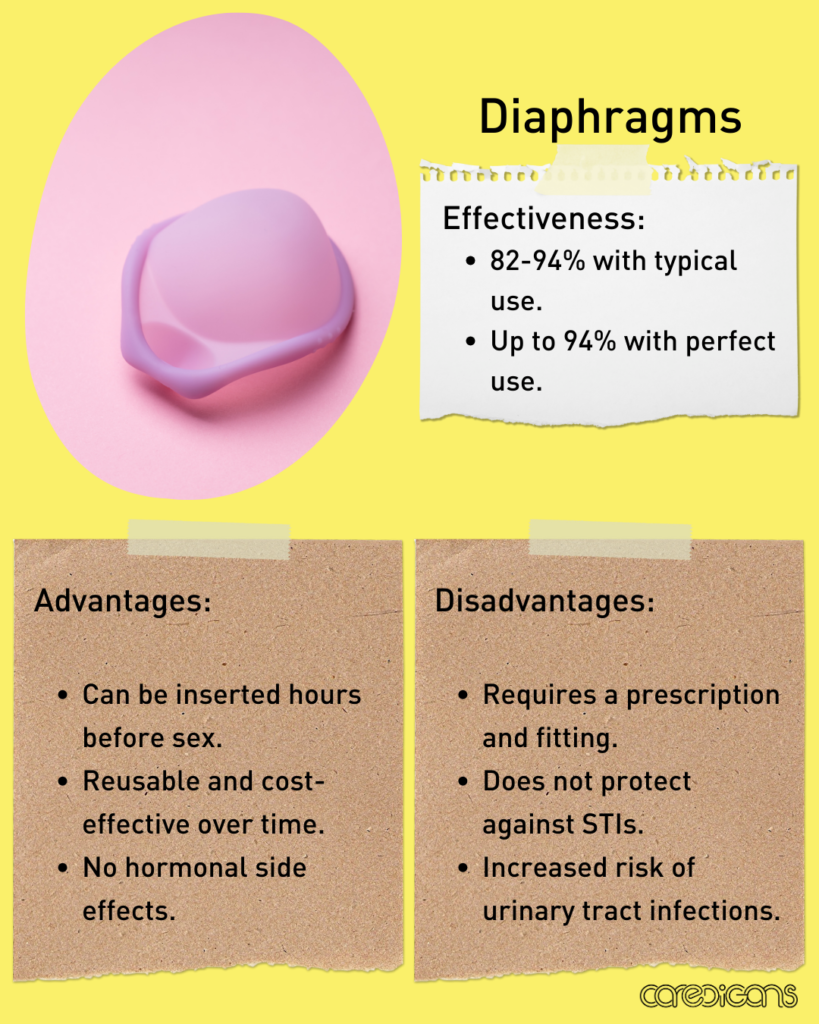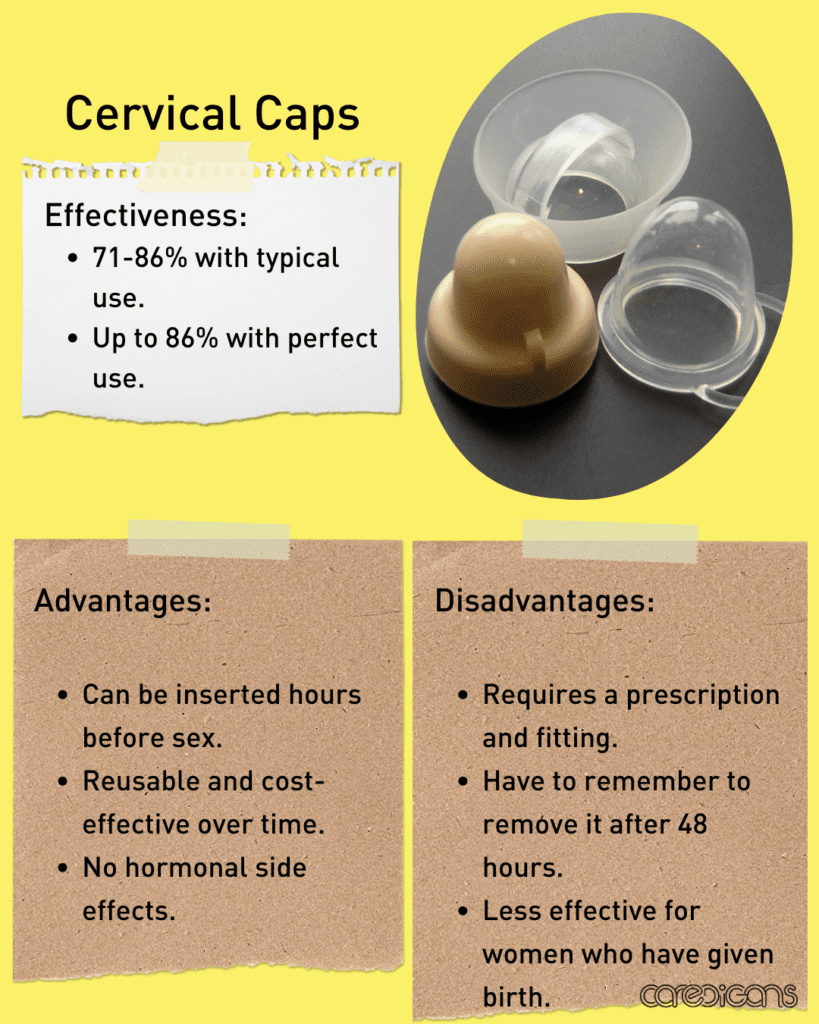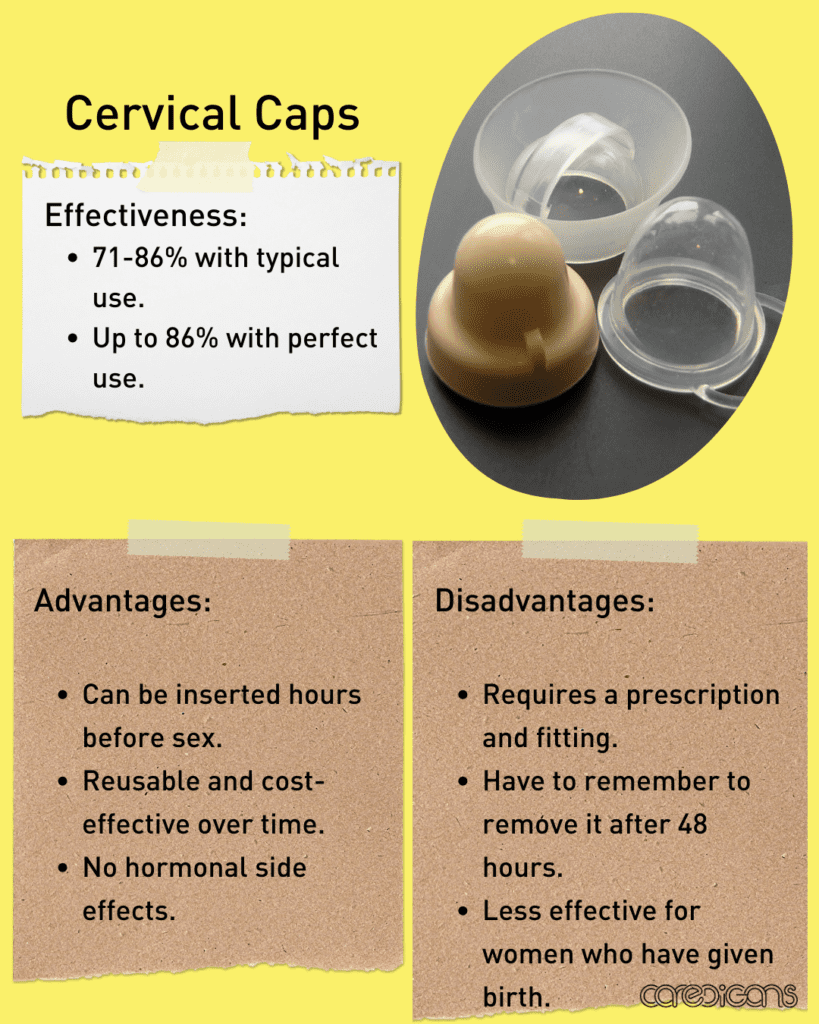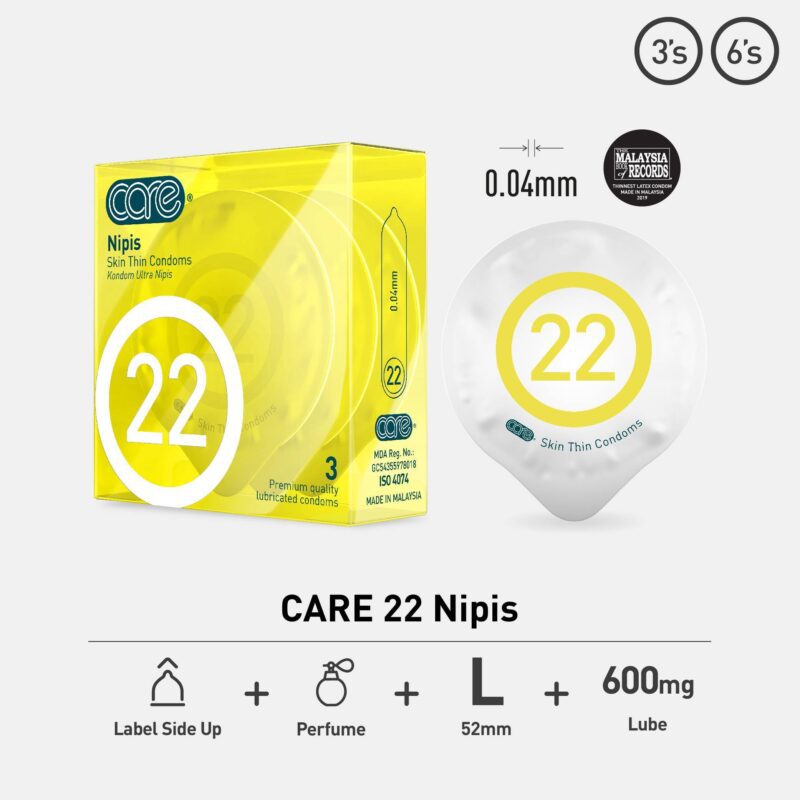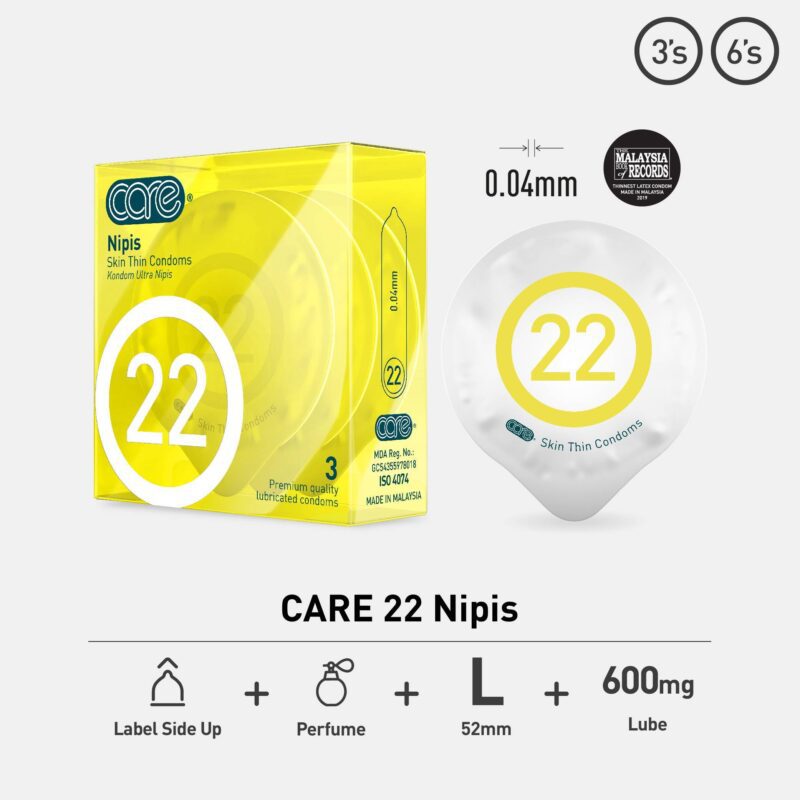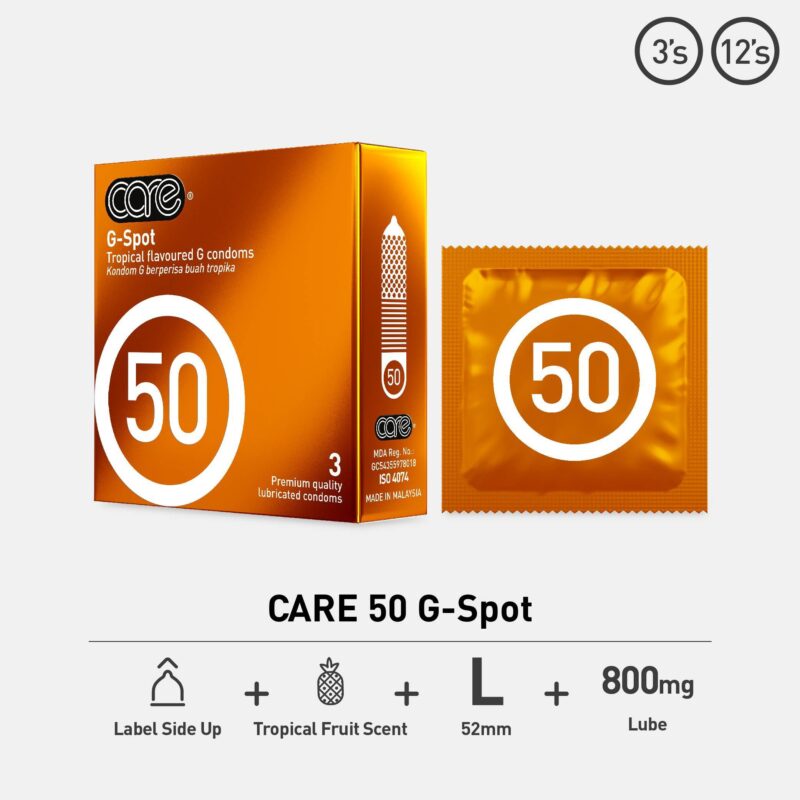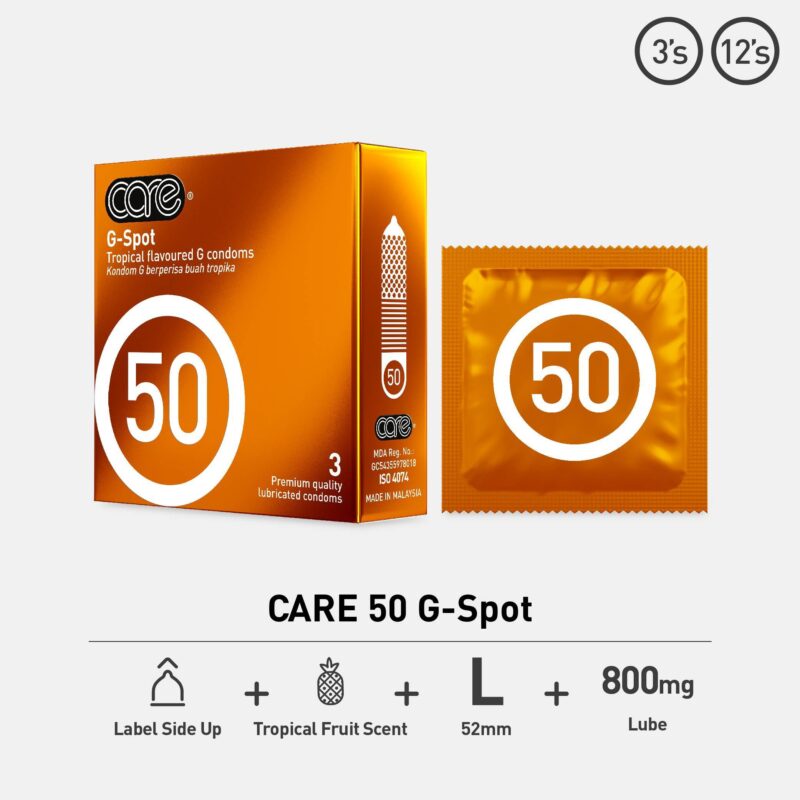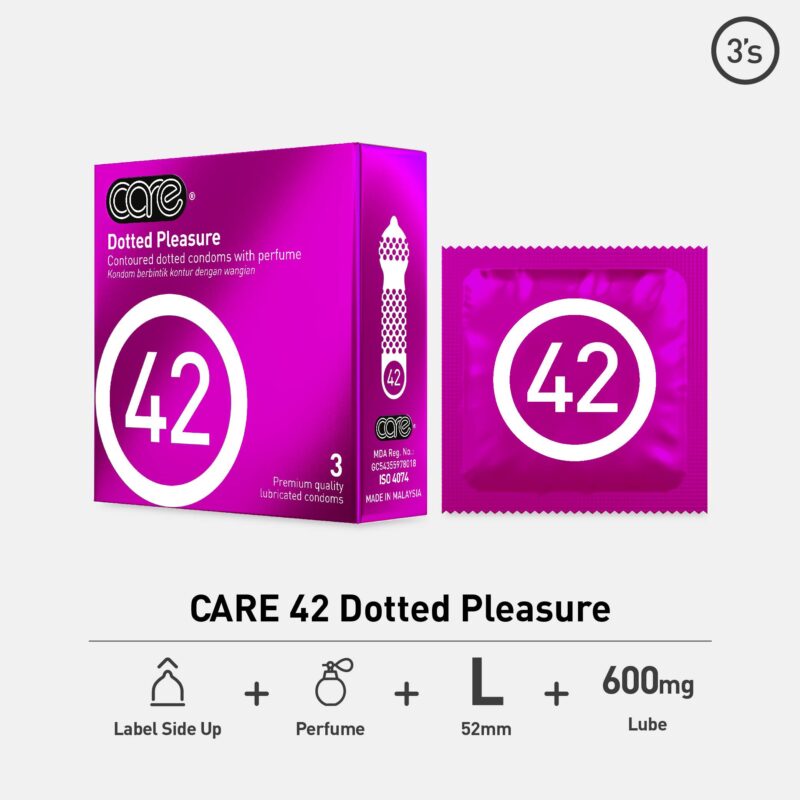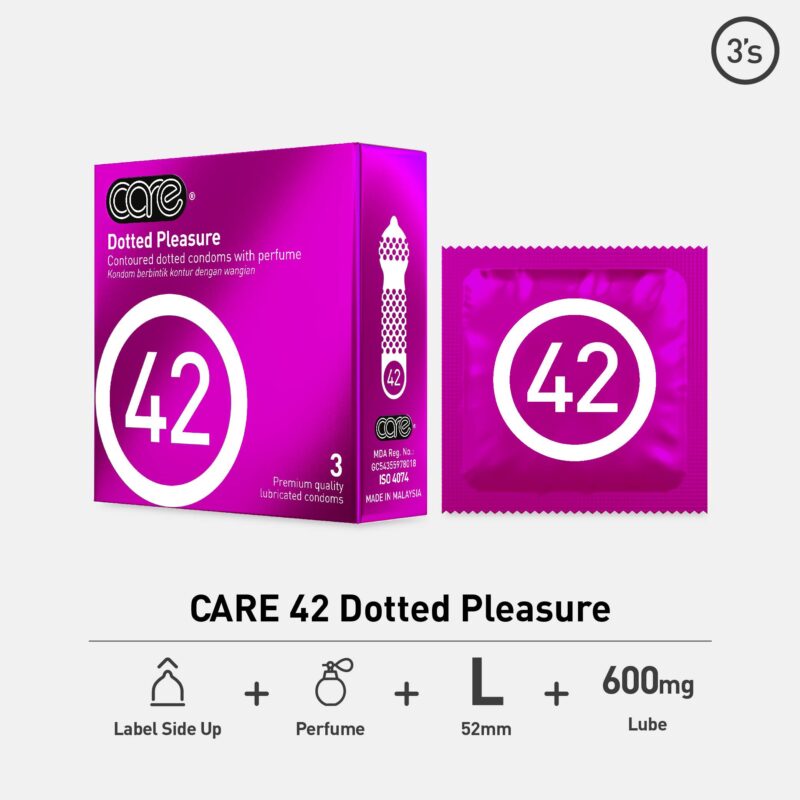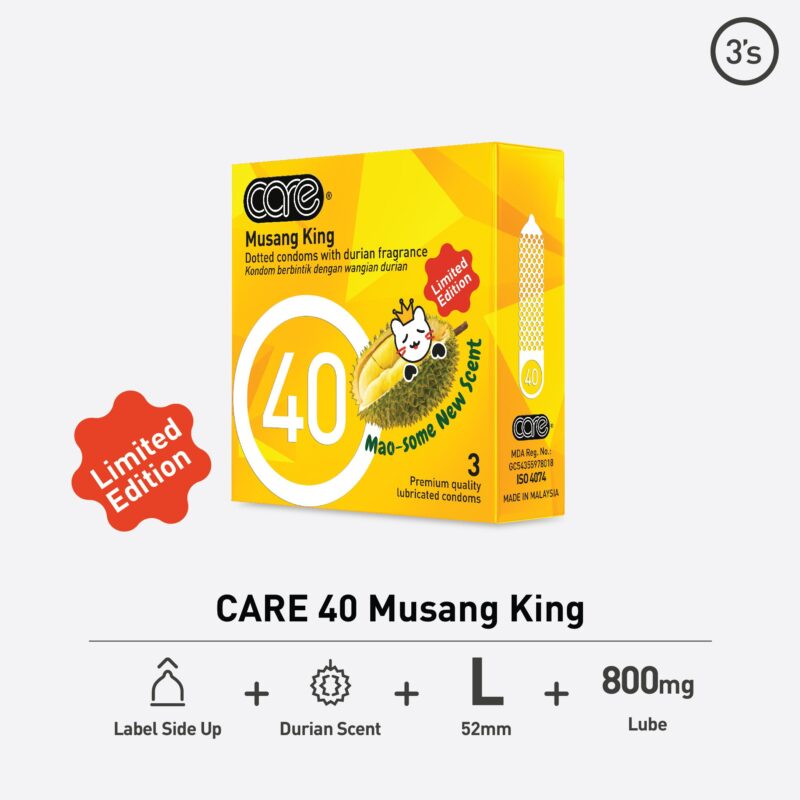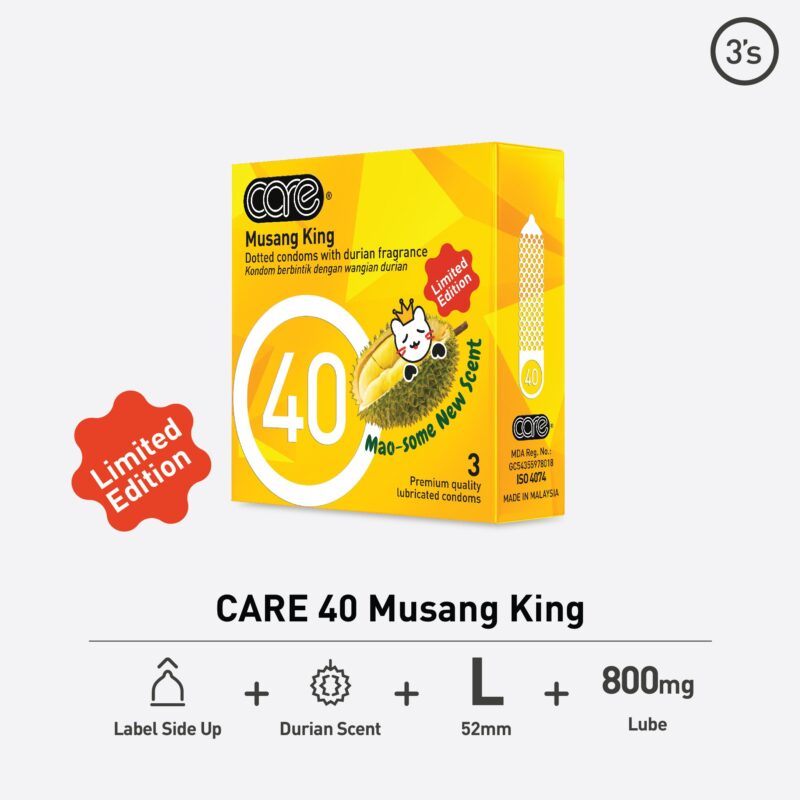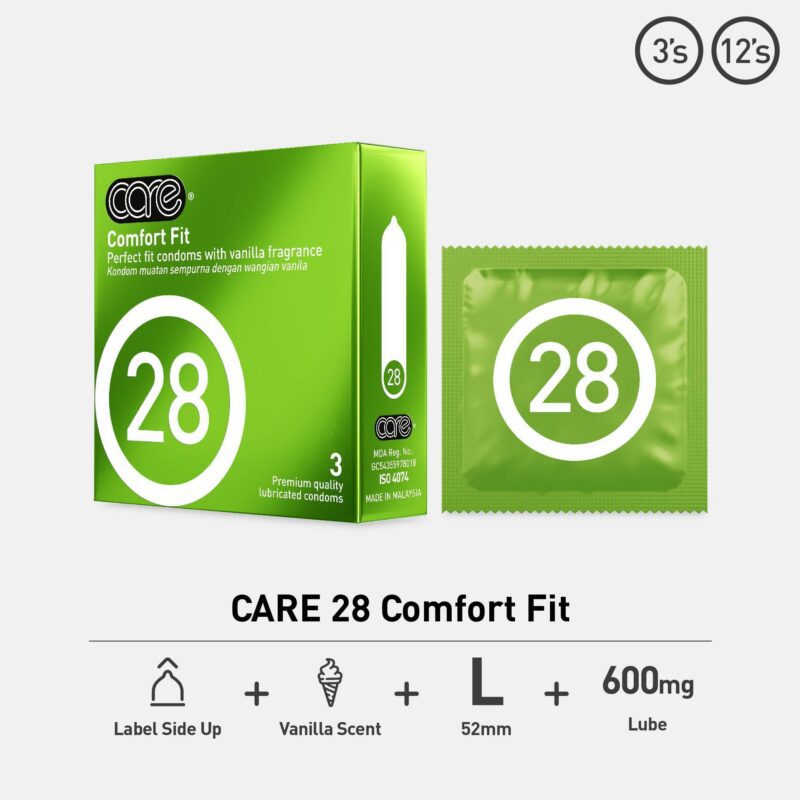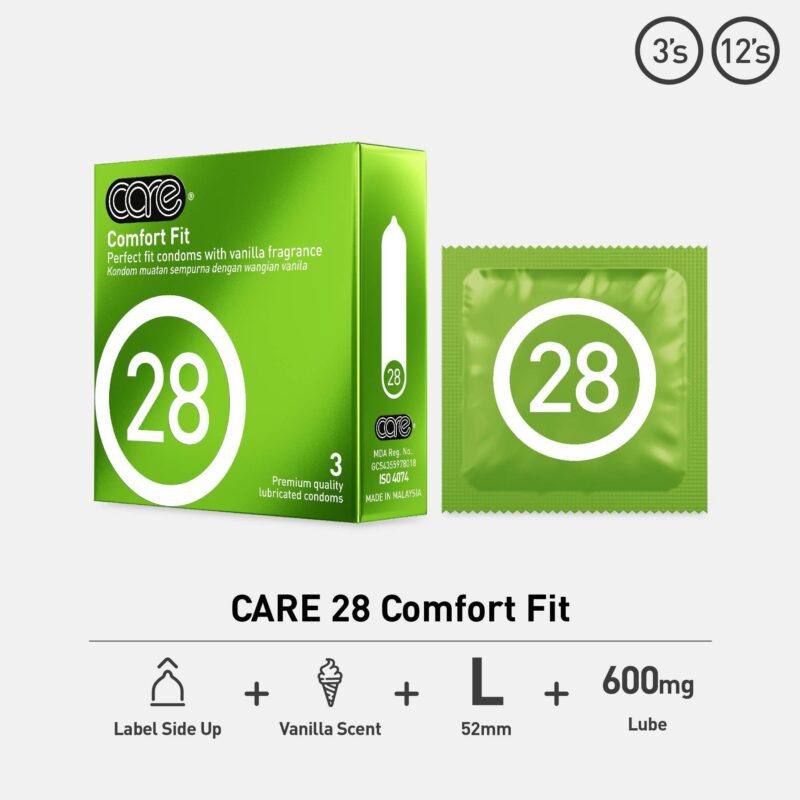When was condom invented? History of condom.
June 7, 2024Can I Use Two Condoms at Once?
August 1, 202415 Condom Alternatives for Birth Control
When it comes to safe and effective contraception, condoms are a popular choice. However, they are not the only option available. Whether you're looking for something reusable, hormone-free, or just a different approach, there are many condom alternatives that might suit your needs better. Let's explore these options and find the best fit for your lifestyle.


Understanding Condom Alternatives
Choosing the right contraceptive method is essential for your sexual health and well-being. Here's a comprehensive guide to some of the most popular condom alternatives, their effectiveness, and their pros and cons.
Hormonal Methods
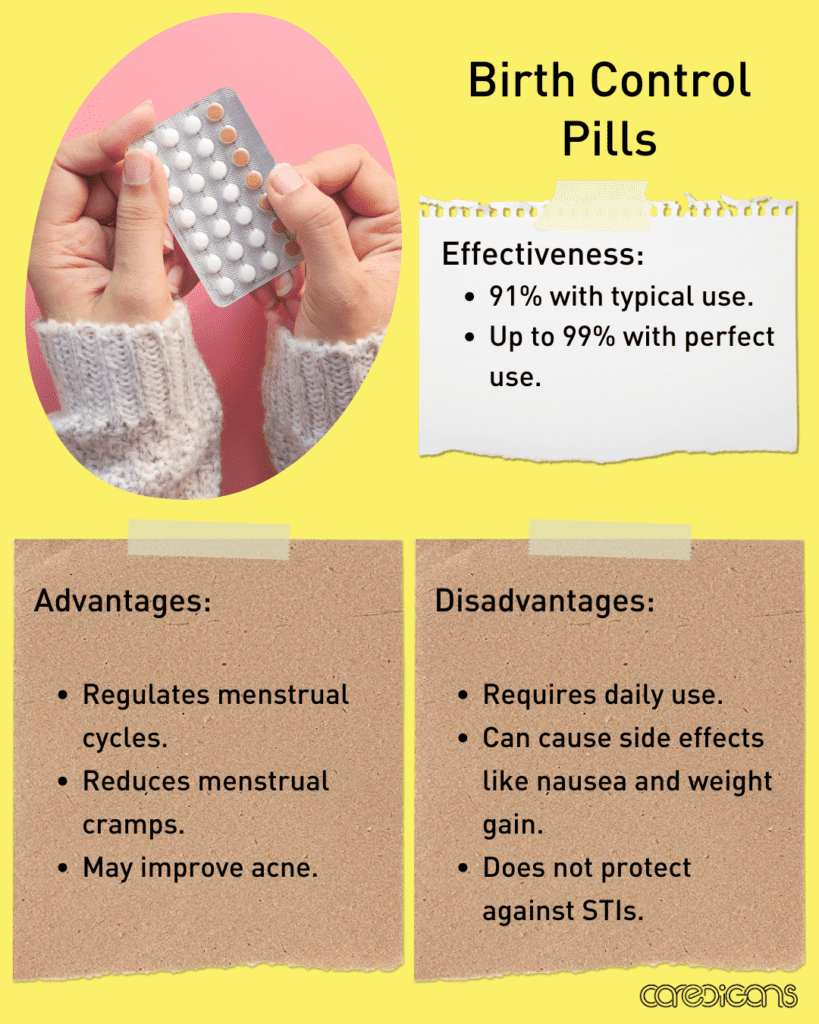
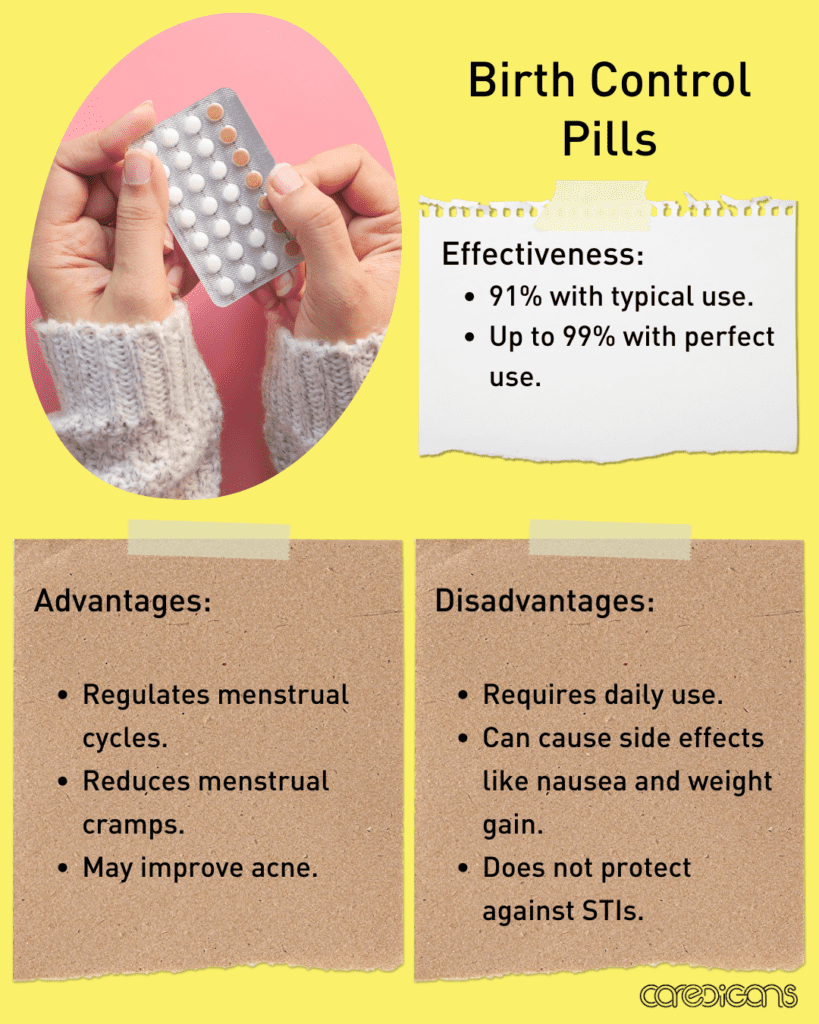
Birth Control Pills
Effectiveness: 91-99%
Birth control pills are taken daily and contain hormones that prevent ovulation. They are highly effective when taken consistently.
Pros
- Regulates menstrual cycles
- Reduces menstrual cramps
- May improve acne
Cons
- Requires daily intake
- Potential side effects include nausea and weight gain
- No protection against STIs


Birth Control Patches
Effectiveness: 91-99%
Patches are applied to the skin and release hormones to prevent pregnancy. They need to be changed weekly.
Pros
- Easy to use
- Only needs to be changed once a week
- Regulates menstrual cycles
- Fewer PMS symptoms
Cons
- Can cause skin irritation
- Similar side effects to birth control pills
- No protection against STIs
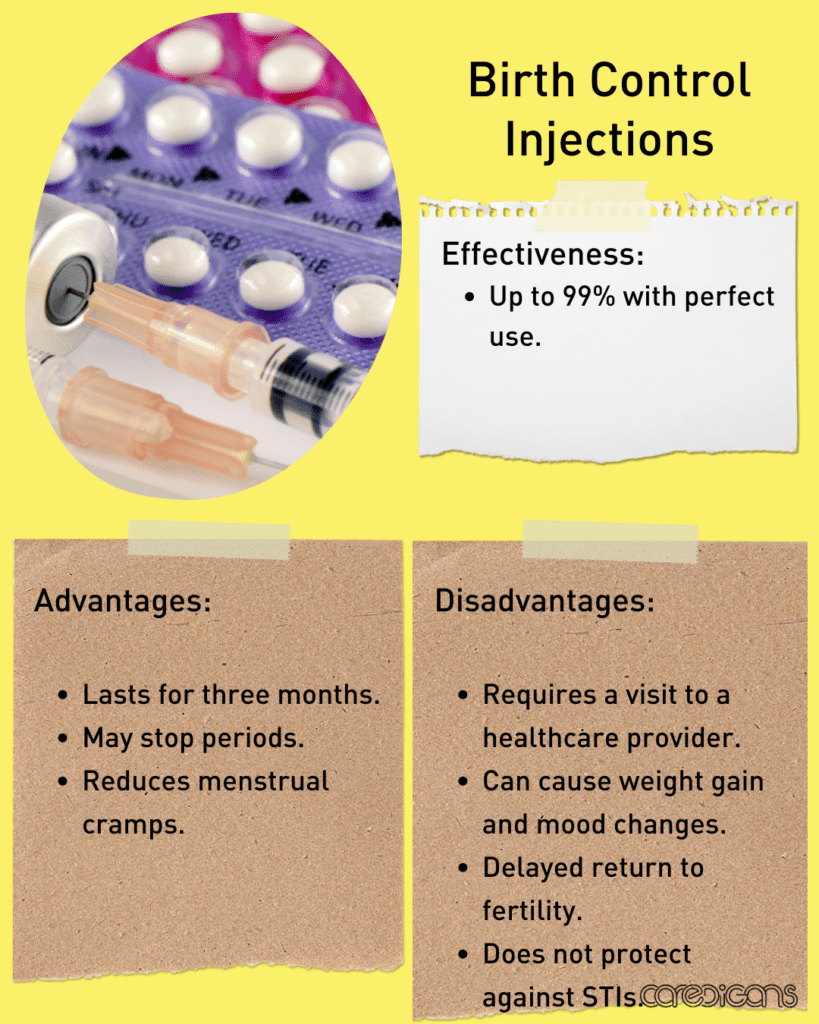
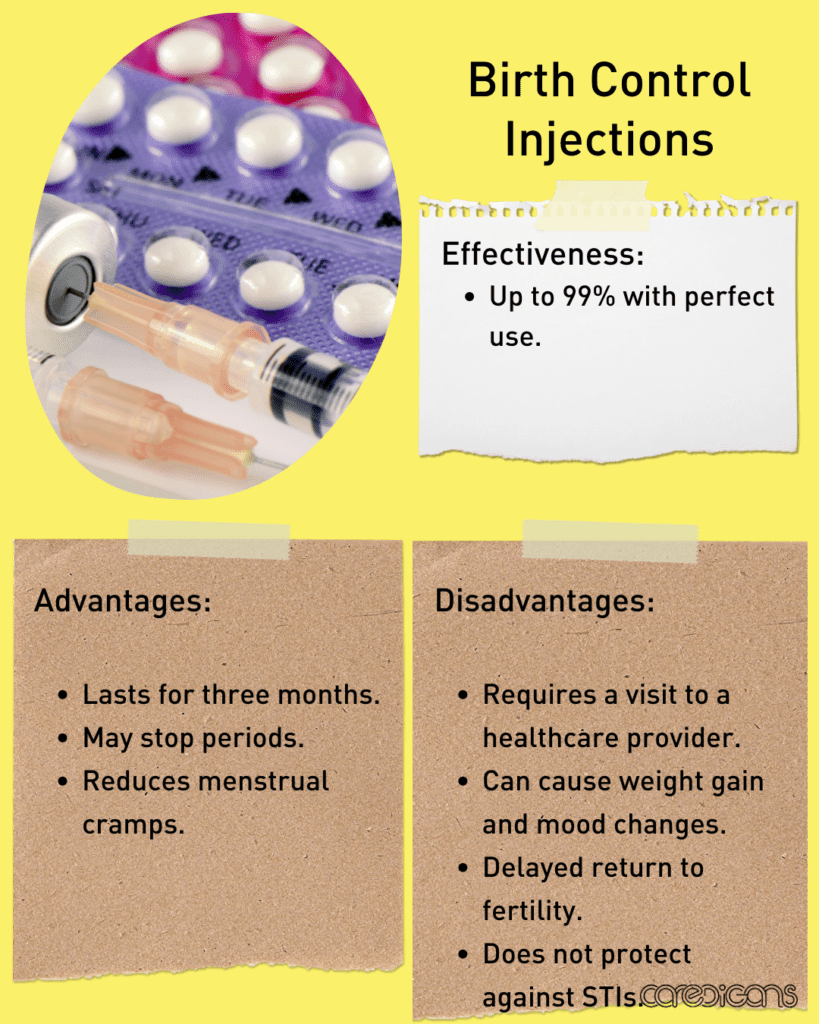
Birth Control Injections
Effectiveness: Up to 99%
Injections, such as Depo-Provera, are administered every three months and are a convenient long-term contraceptive option.
Pros
- Long-lasting (three months)
- May stop periods
- Reduces menstrual cramps
Cons
- Requires a visit to a healthcare provider
- Potential weight gain and mood changes
- Delay in return to fertility after stopping
- No protection against STIs
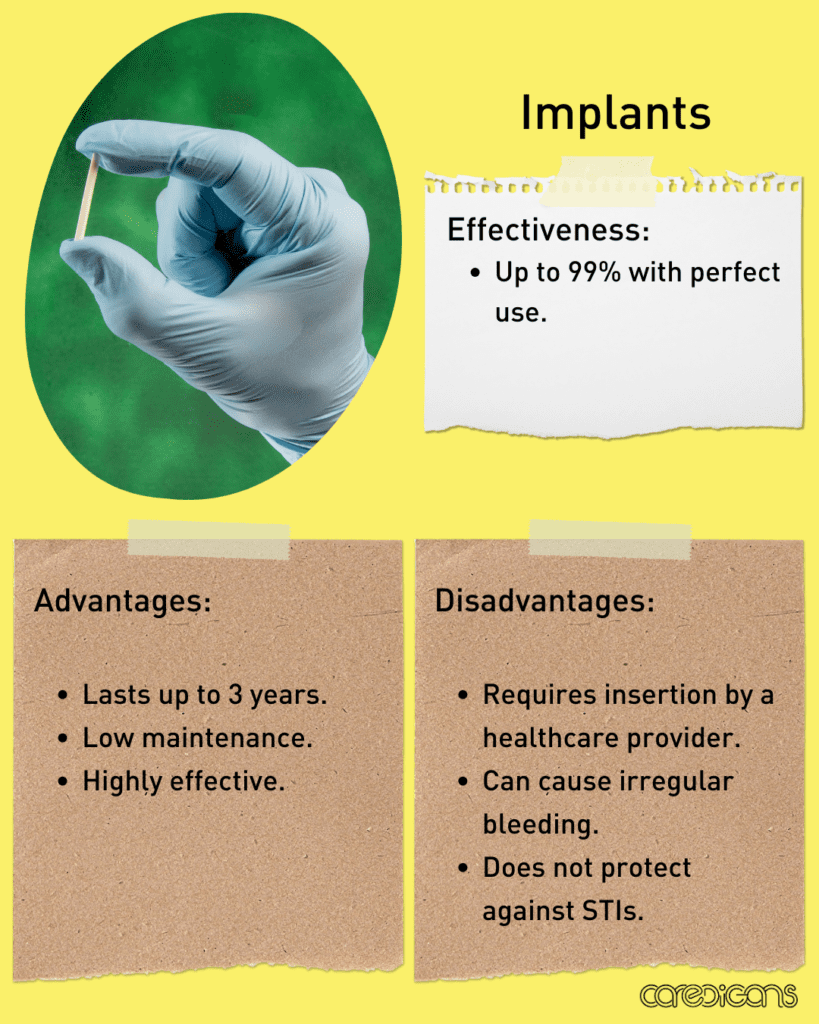
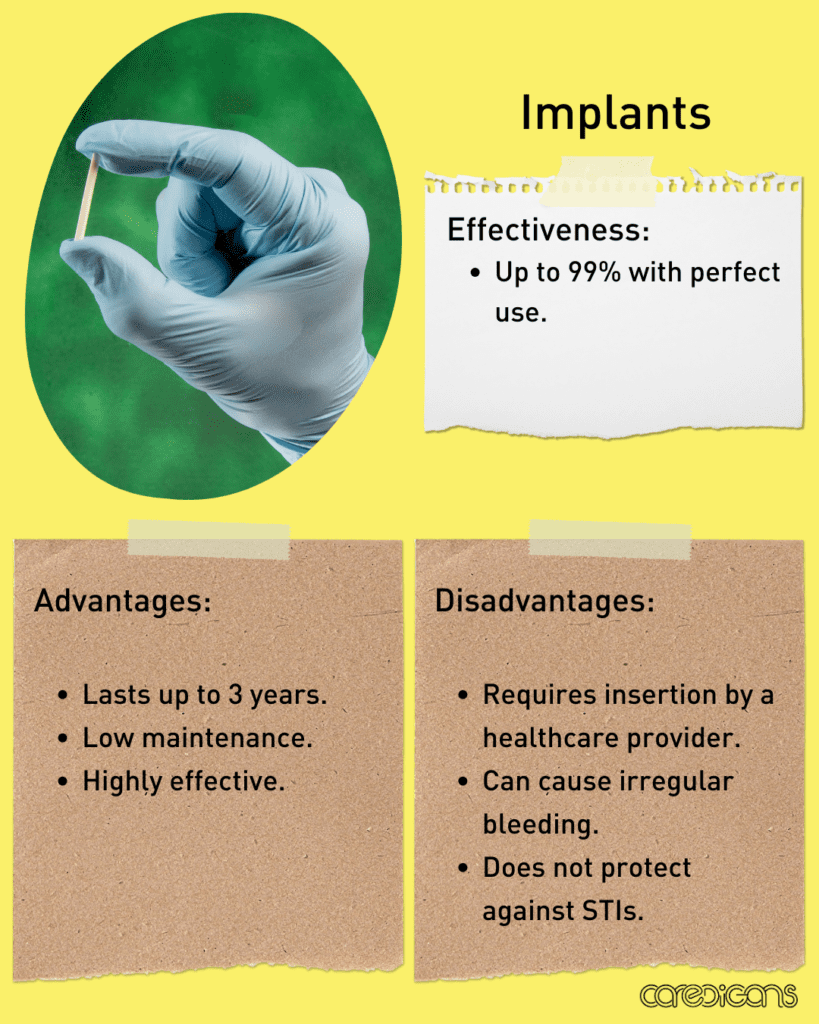
Contraceptive Implants
Effectiveness: Up to 99%
Implants are small rods placed under the skin of the arm that release hormones to prevent pregnancy. They are effective for up to 3 years.
Pros
- Long-lasting (up to 3 years)
- Low maintenance
- Highly effective
Cons
- Requires insertion by a healthcare provider
- Can cause irregular bleeding
- No protection against STIs
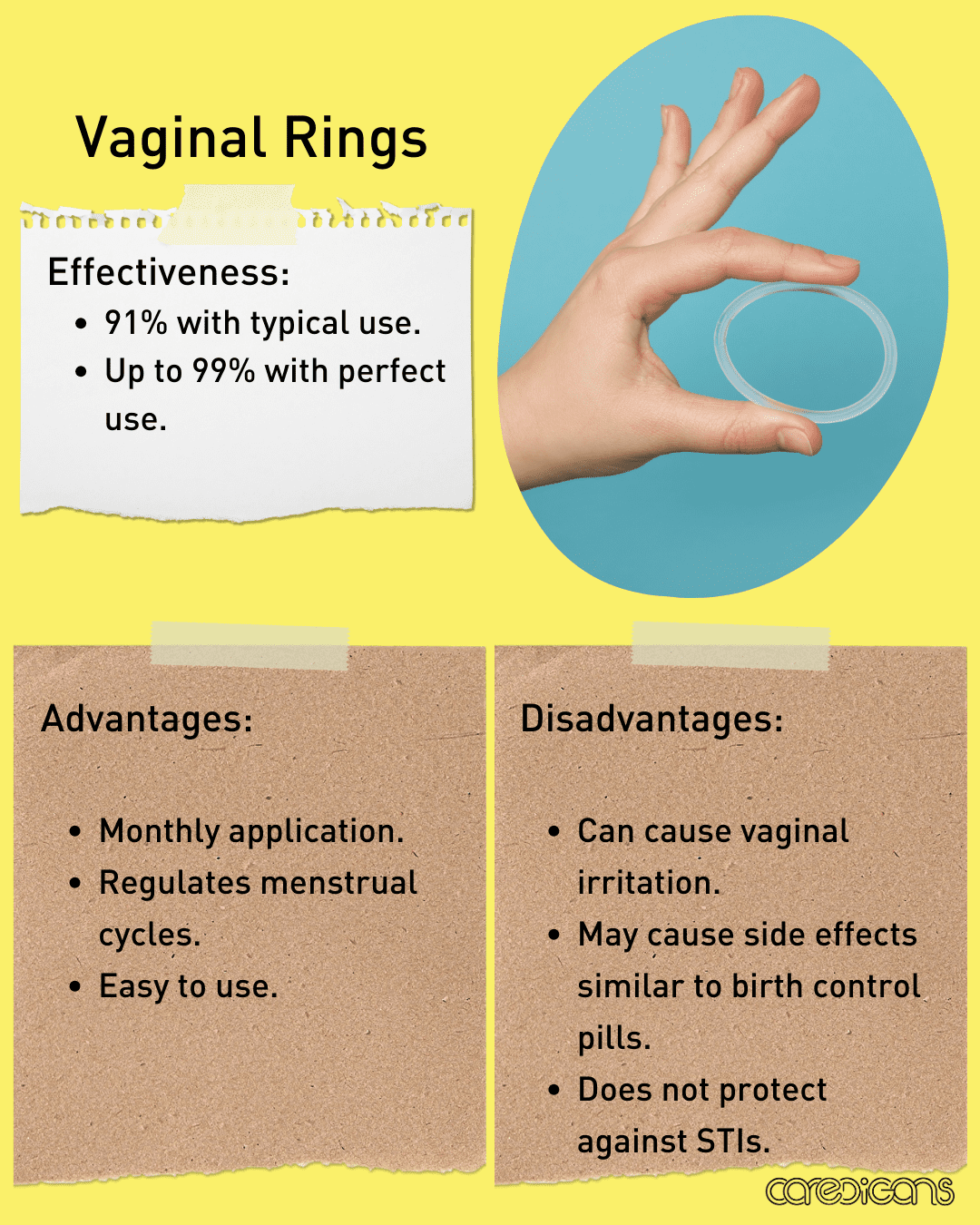
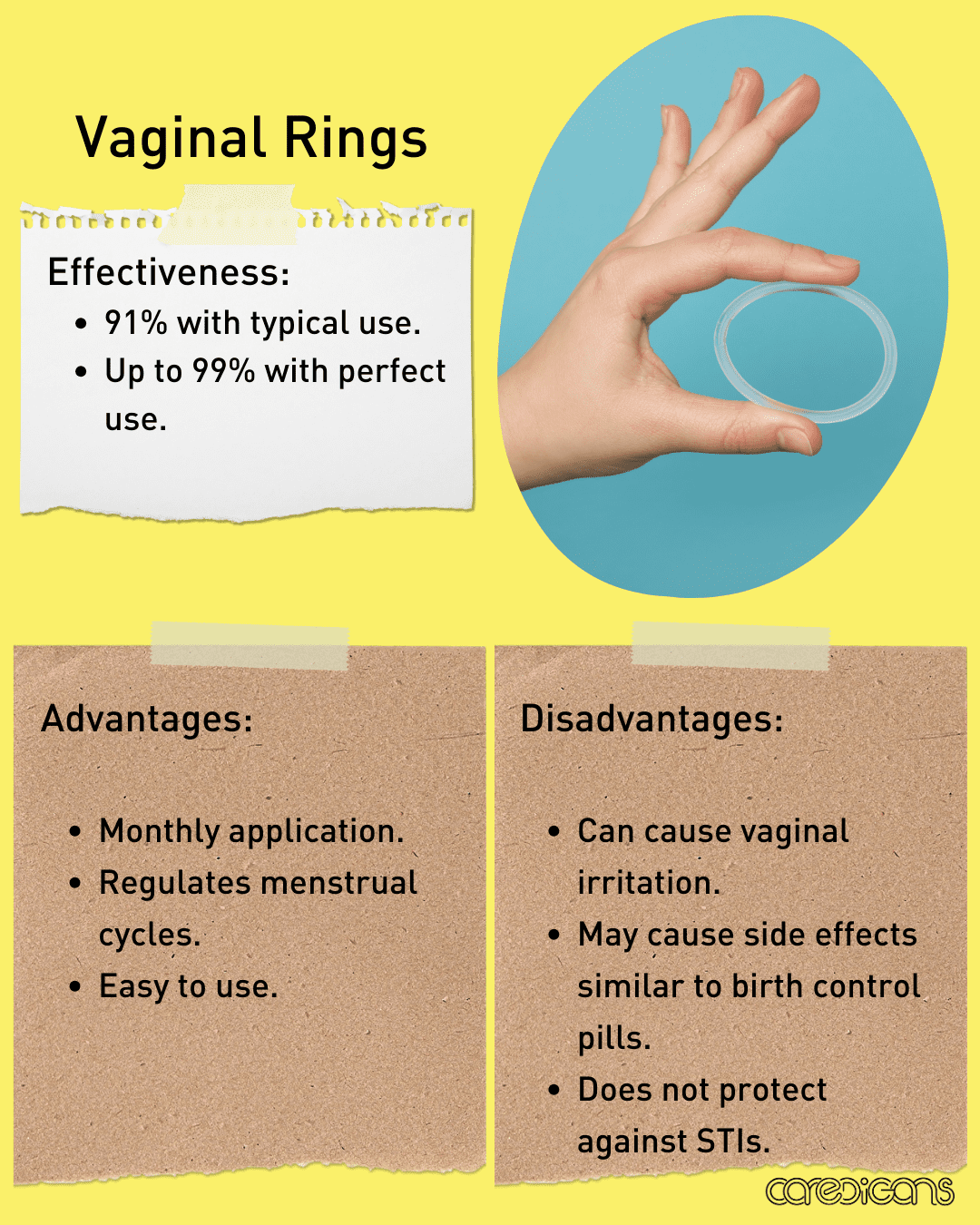
Vaginal Rings
Effectiveness: 91-99%
Vaginal rings are flexible rings inserted into the vagina that release hormones to prevent pregnancy. They are typically changed monthly.
Pros
- Monthly application
- Regulates menstrual cycles
- Easy to use
Cons
- Can cause vaginal irritation
- May cause side effects similar to birth control pills
- No protection against STIs
Non-Hormonal Methods
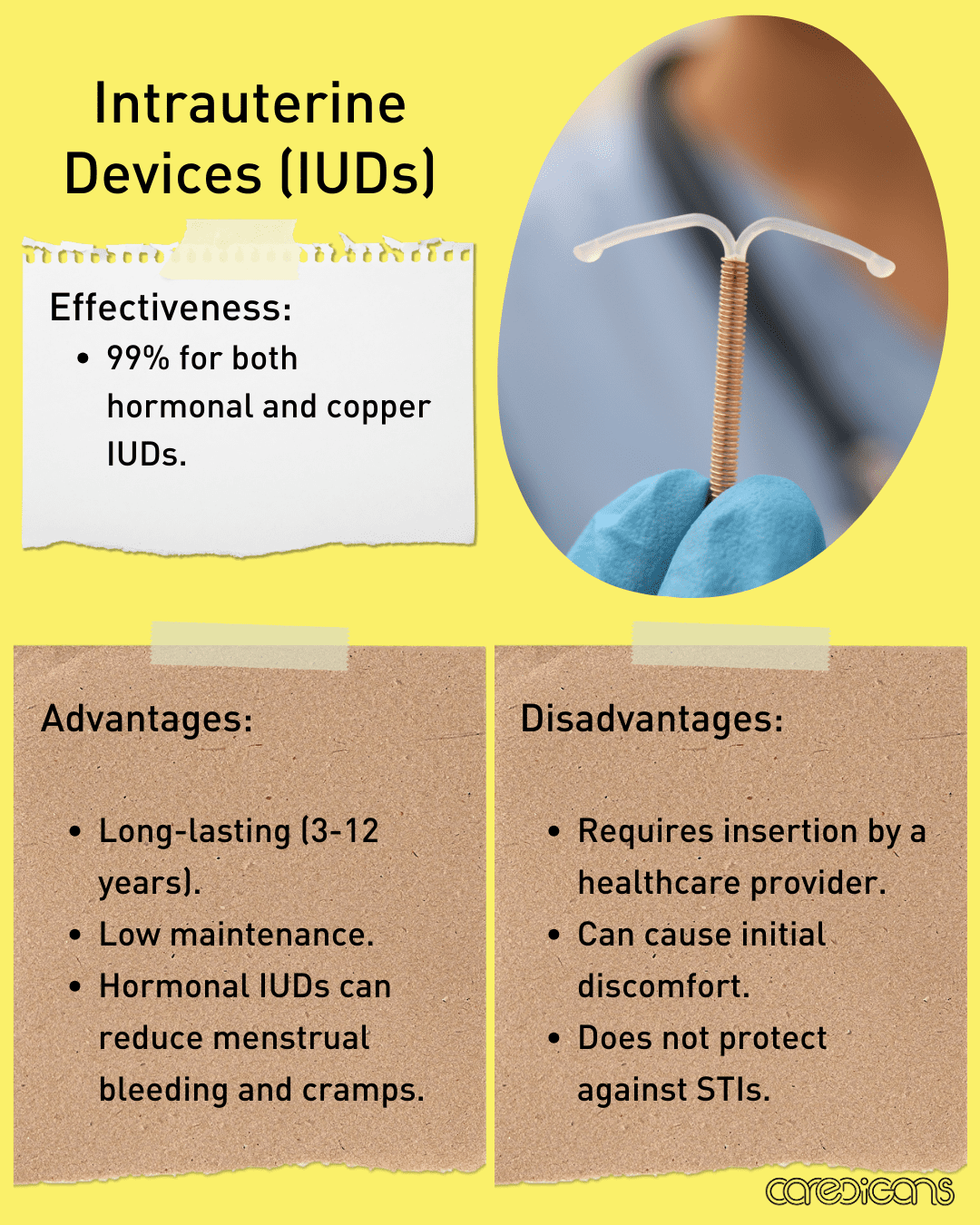
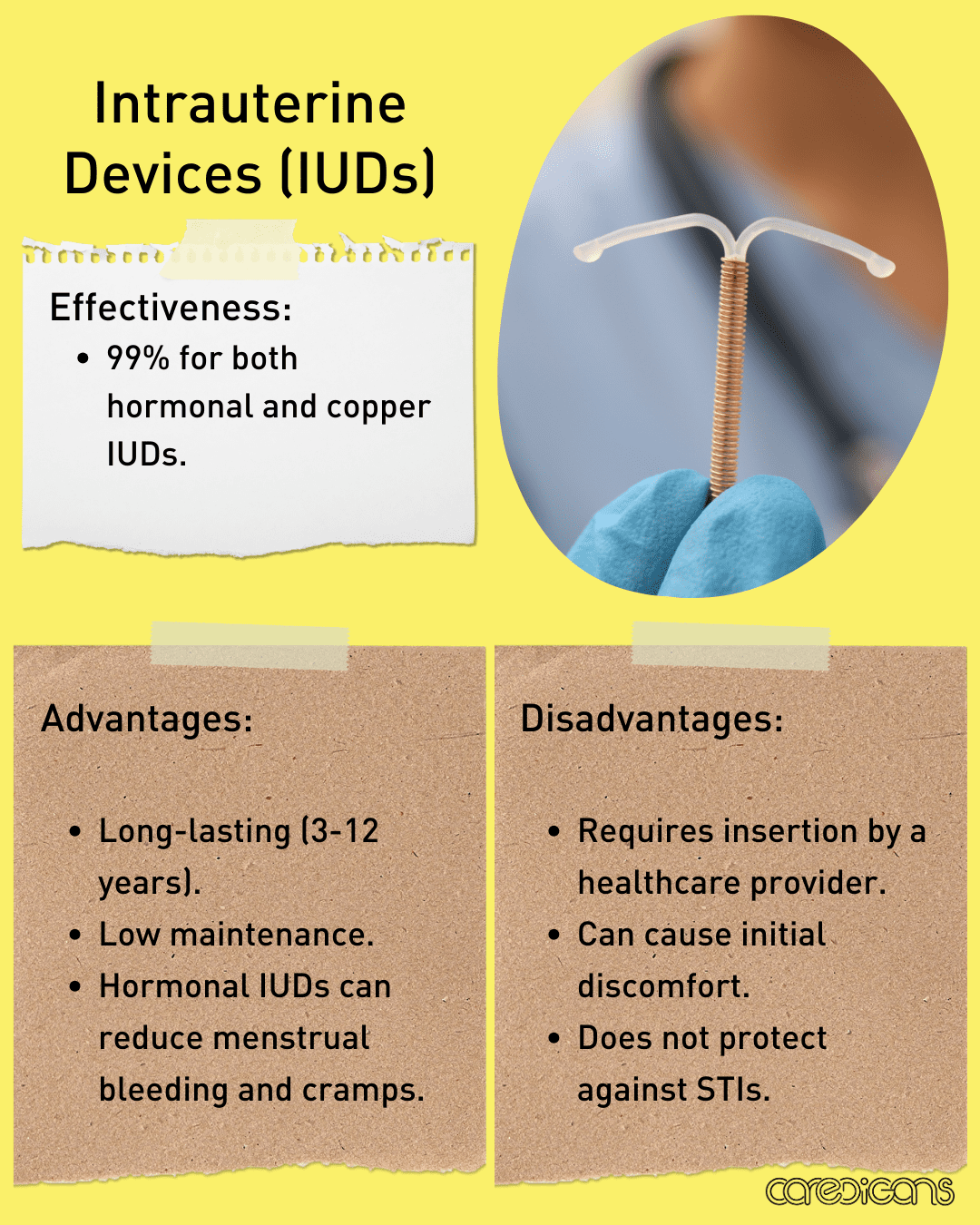
IUDs (Intrauterine Device)
Effectiveness: 99%
A copper IUD is a small device inserted into the uterus that prevents pregnancy without the use of hormones. It can last up to 10 years.
Pros
- Long-lasting and low maintenance
- Hormone-free
- Highly effective
Cons
- Requires insertion by a healthcare provider
- Initial discomfort and spotting
- No protection against STIs
Diaphragms and Cervical Caps
Effectiveness: 71-94%
These barrier methods cover the cervix and block sperm from entering the uterus. They are used with spermicide and can be inserted hours before intercourse.
Pros
- Reusable and cost-effective over time
- No hormonal side effects
- Can be inserted ahead of time
Cons
- Requires fitting and prescription
- Increased risk of urinary tract infections
- Less effective for women who have given birth
- No protection against STIs
Natural Methods
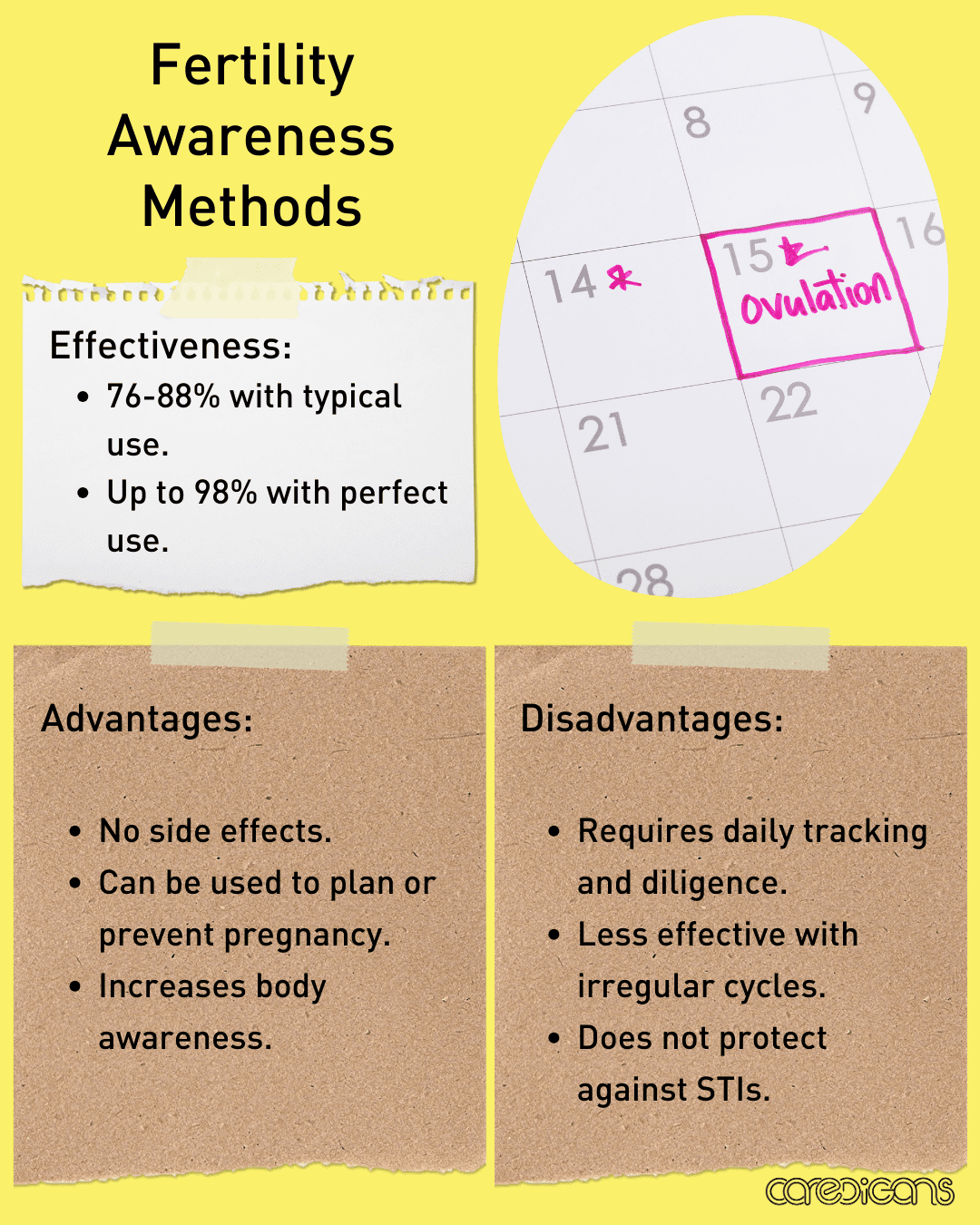
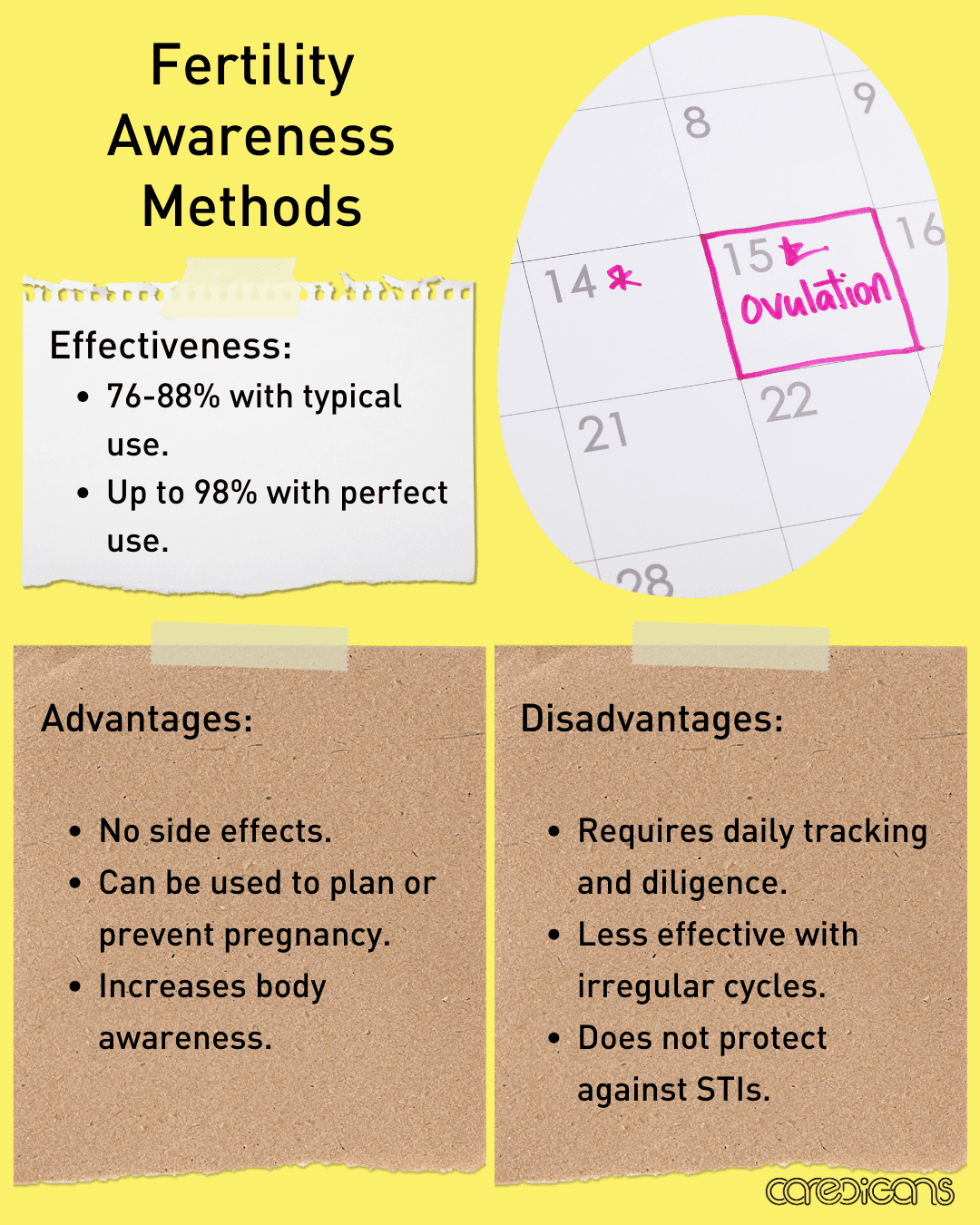
Fertility Awareness Methods (FAM)
Effectiveness: 76-98%
FAM involves tracking your menstrual cycle to determine your fertile days and avoiding intercourse or using barrier methods during those times.
Pros
- No side effects
- Increases body awareness
- Can be used to plan or prevent pregnancy
Cons
- Requires daily tracking and commitment
- Less effective with irregular cycles
- No protection against STIs
Other Barrier Methods
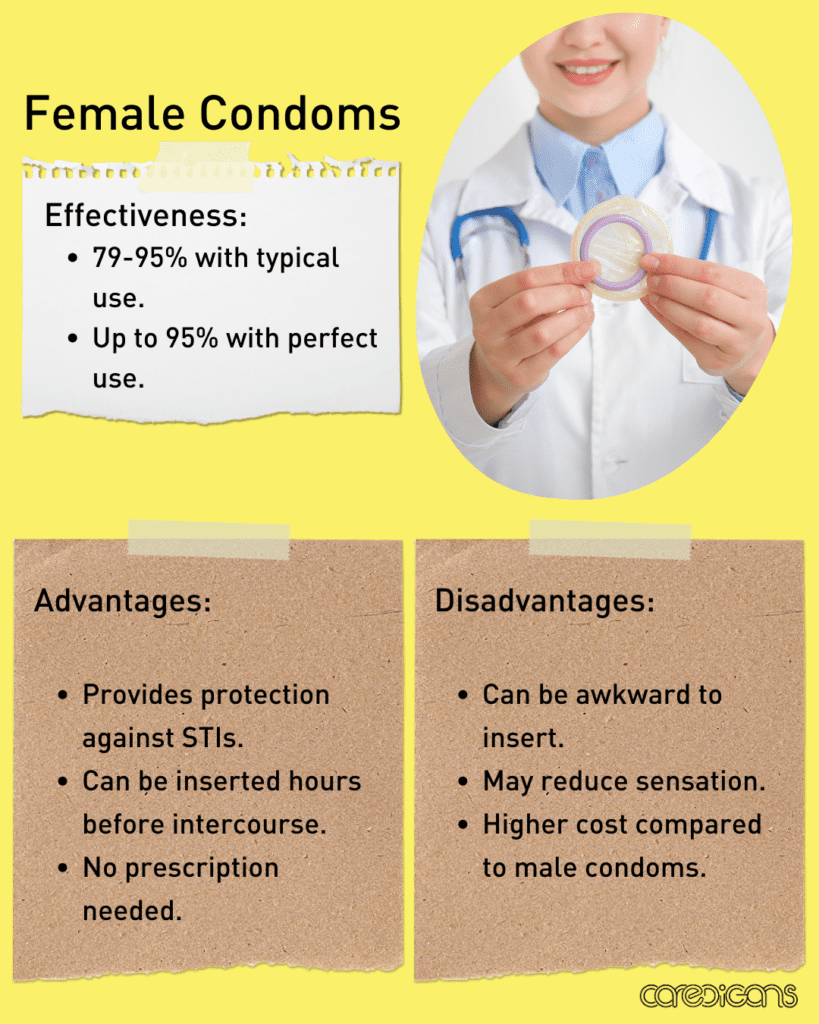
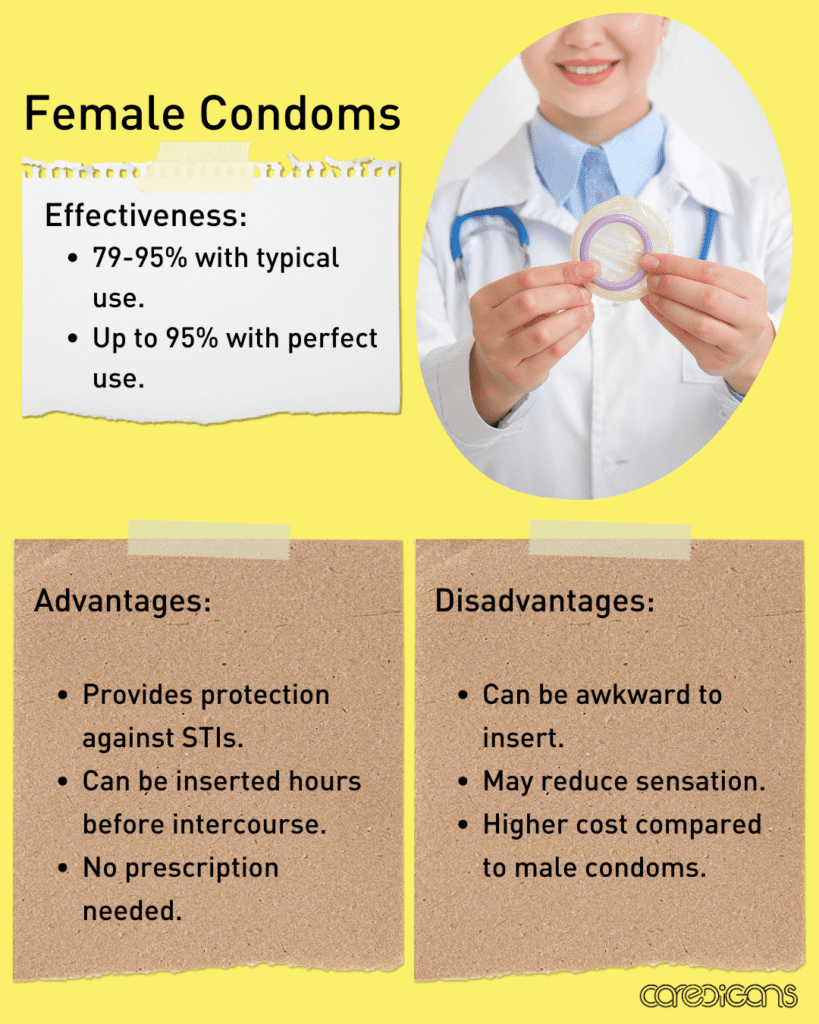
Female Condoms
Effectiveness: 79-95%
Female condoms are worn inside the vagina and provide a barrier to prevent sperm from entering the uterus.
Pros
- Provides protection against STIs
- Can be inserted hours before intercourse
- No prescription needed
Cons
- Can be awkward to insert
- May reduce sensation
- Higher cost compared to male condoms
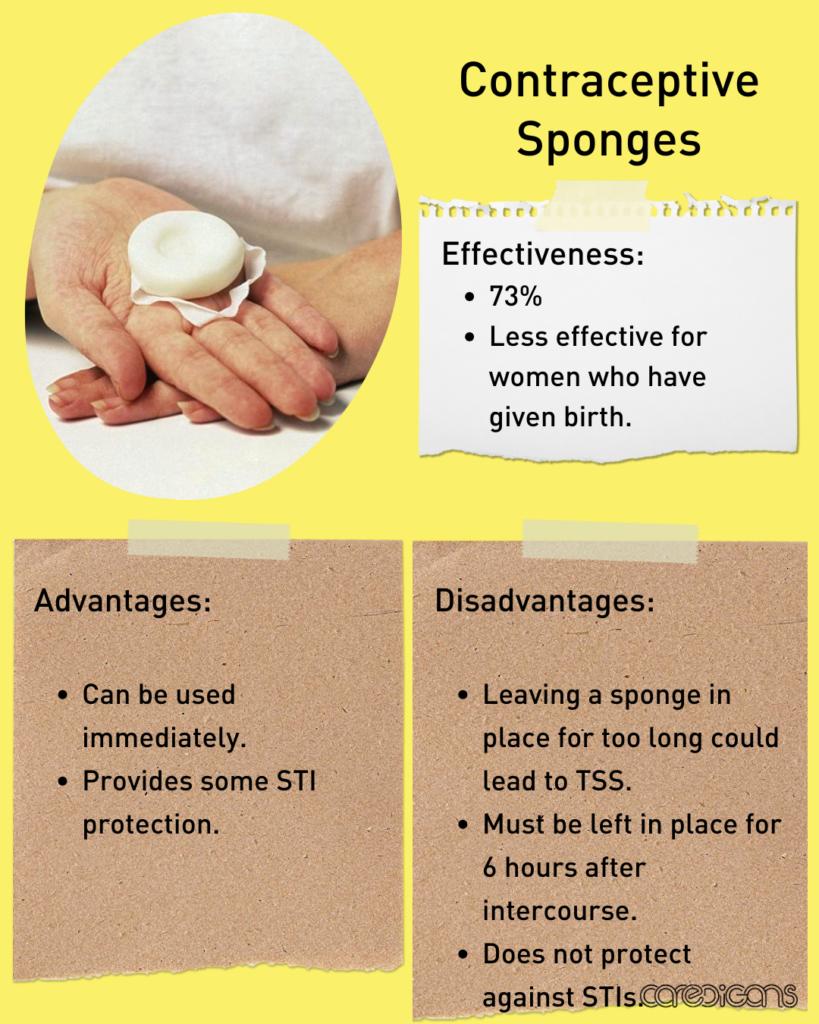

Contraceptive Sponges
Effectiveness: 73%
Sponges are inserted into the vagina before intercourse and release spermicide to prevent pregnancy.
Pros
- Can be used immediately
- Provides some protection against STIs
Cons
- Must be left in place for 6 hours after intercourse
- Can cause vaginal irritation and toxic shock syndrome (TSS)
- Less effective for women who have given birth
Permanent Methods
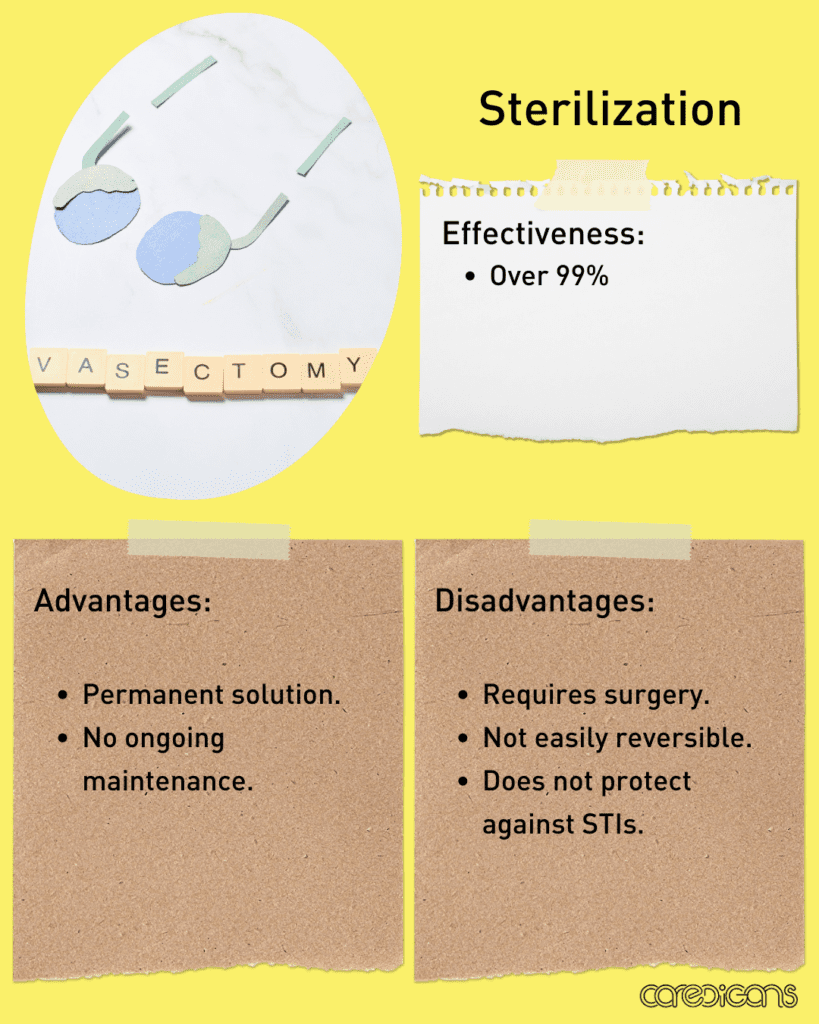
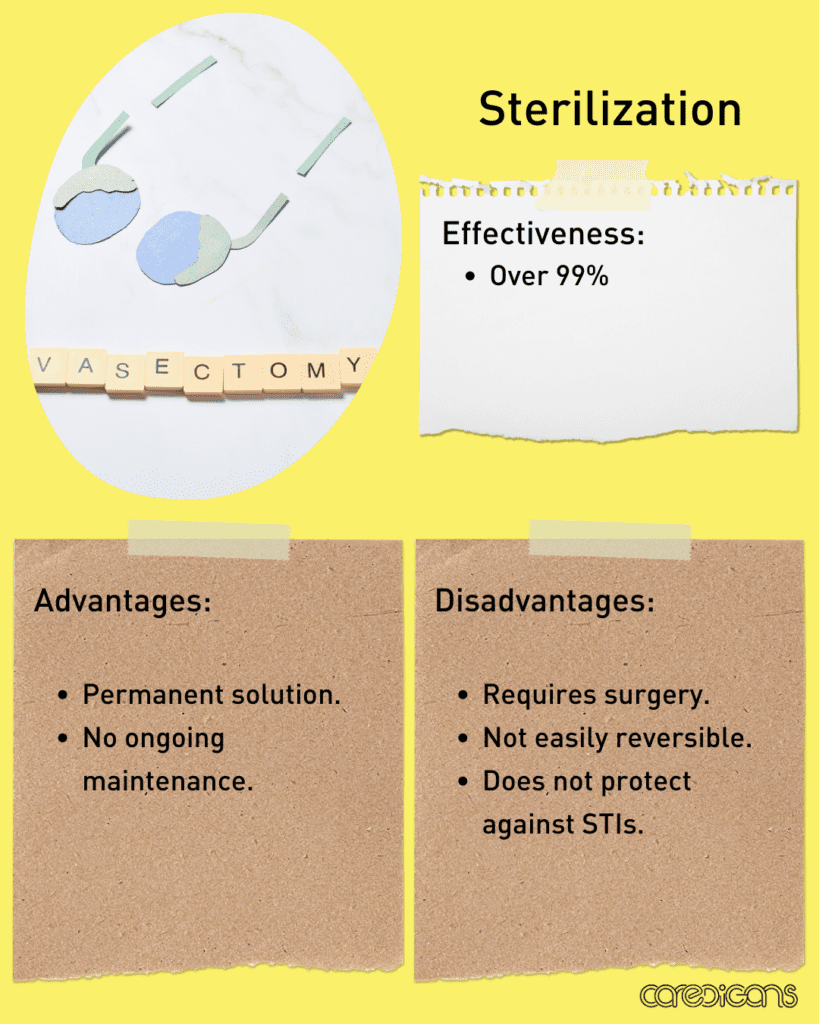
Sterilization
Effectiveness: 99%
Sterilization is a permanent contraceptive method that involves a surgical procedure to prevent pregnancy. For women, this means tubal ligation, and for men, vasectomy.
Pros
- Permanent solution
- No ongoing maintenance
Cons
- Requires surgery
- Not easily reversible
- No protection against STIs
Additional Methods
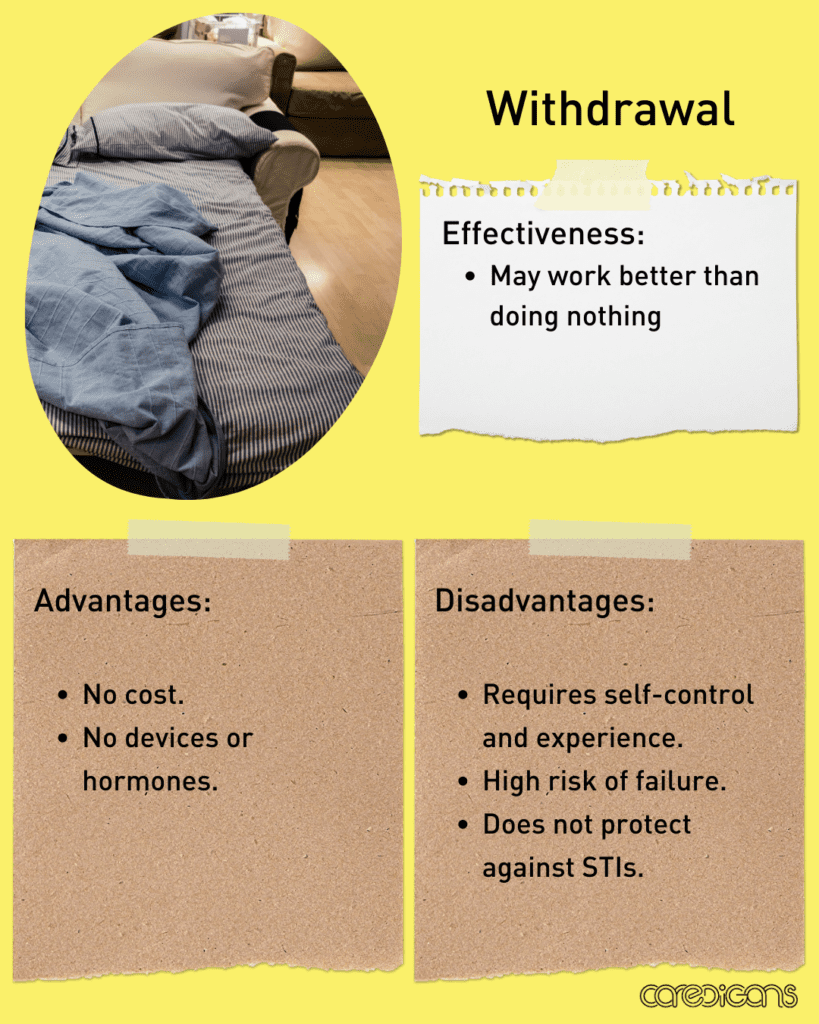
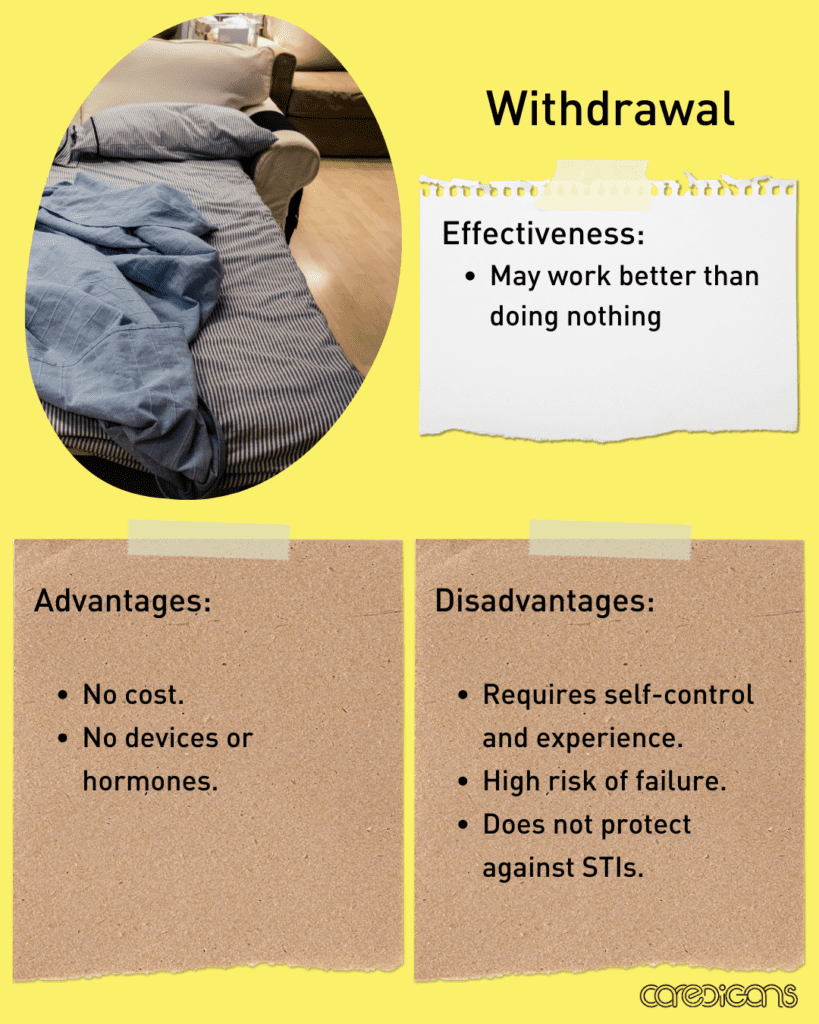
Withdrawal (Pull-Out Method)
Effectiveness: Work better than doing nothing
The withdrawal method involves the male partner withdrawing his penis from the vagina before ejaculation to prevent sperm from entering the uterus.
Pros
- No cost
- No devices or hormones
Cons
- Requires self-control and experience
- High risk of failure if not done correctly
- No protection against STIs
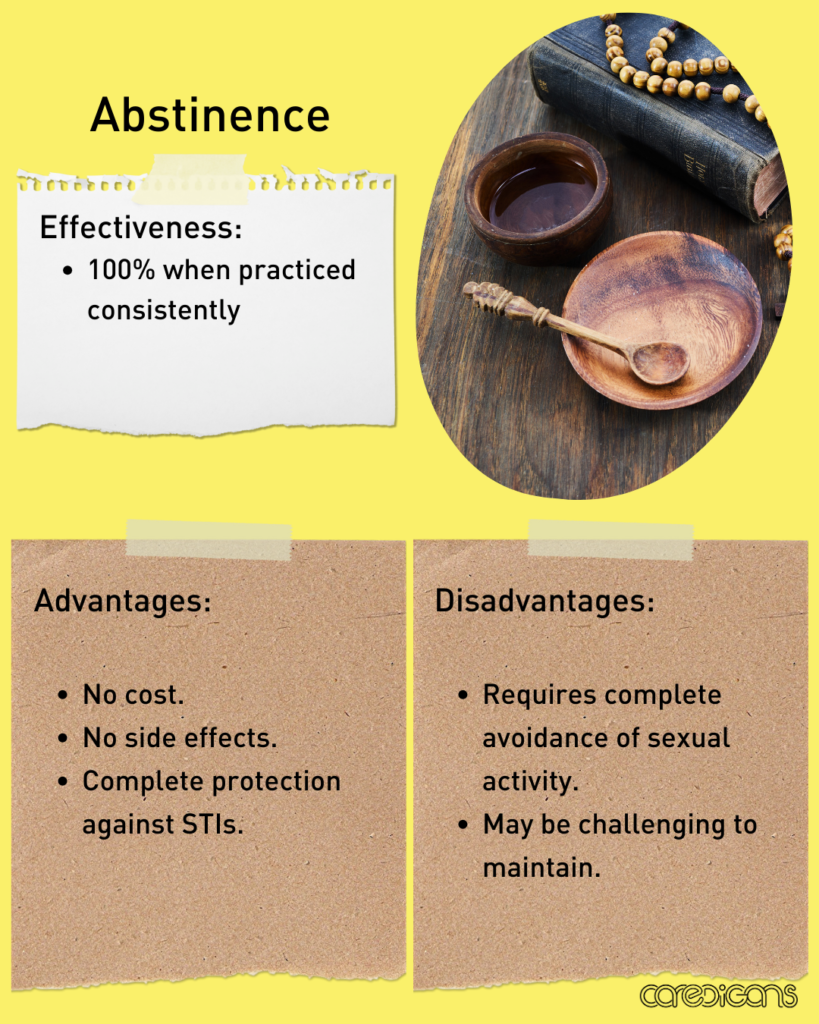

Abstinence
Effectiveness: 100% (when practiced consistently)
Abstinence is the practice of refraining from all forms of sexual activity. It is the only method that is 100% effective in preventing pregnancy and STIs.
Pros
- No cost
- No side effects
- Complete protection against pregnancy and STIs
Cons
- Requires complete avoidance of sexual activity
- Can be challenging to maintain over time
Cost-Effective Methods that Prevent STIs & STDs
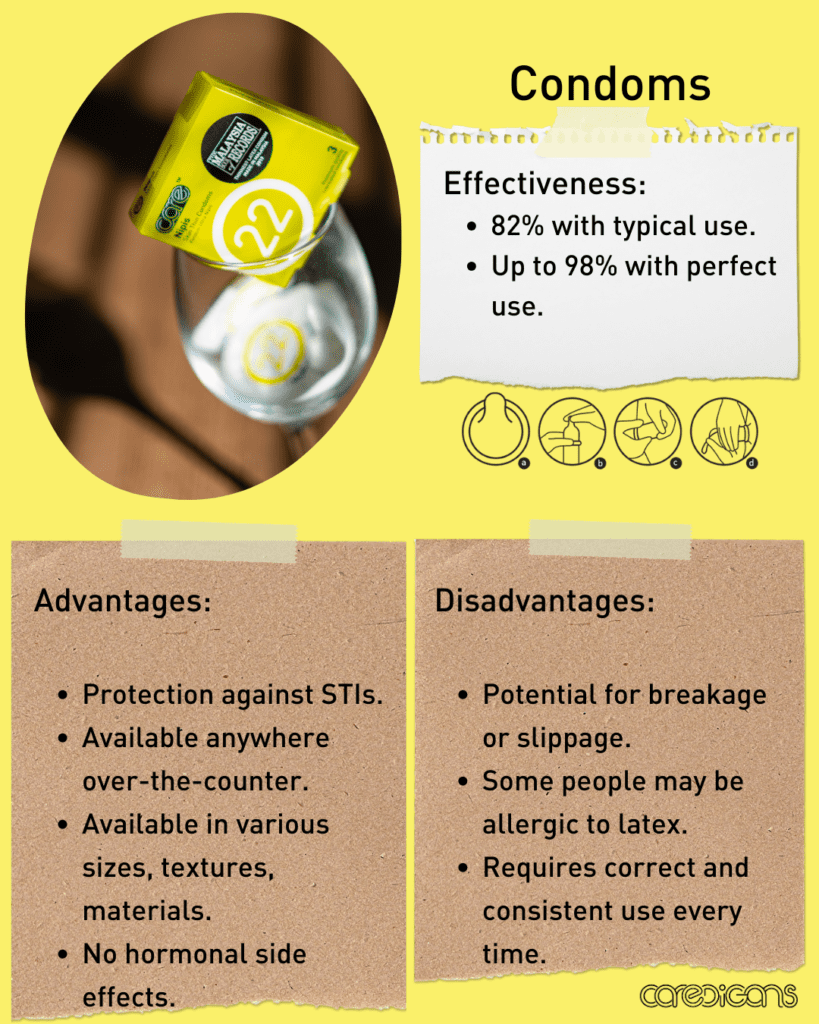
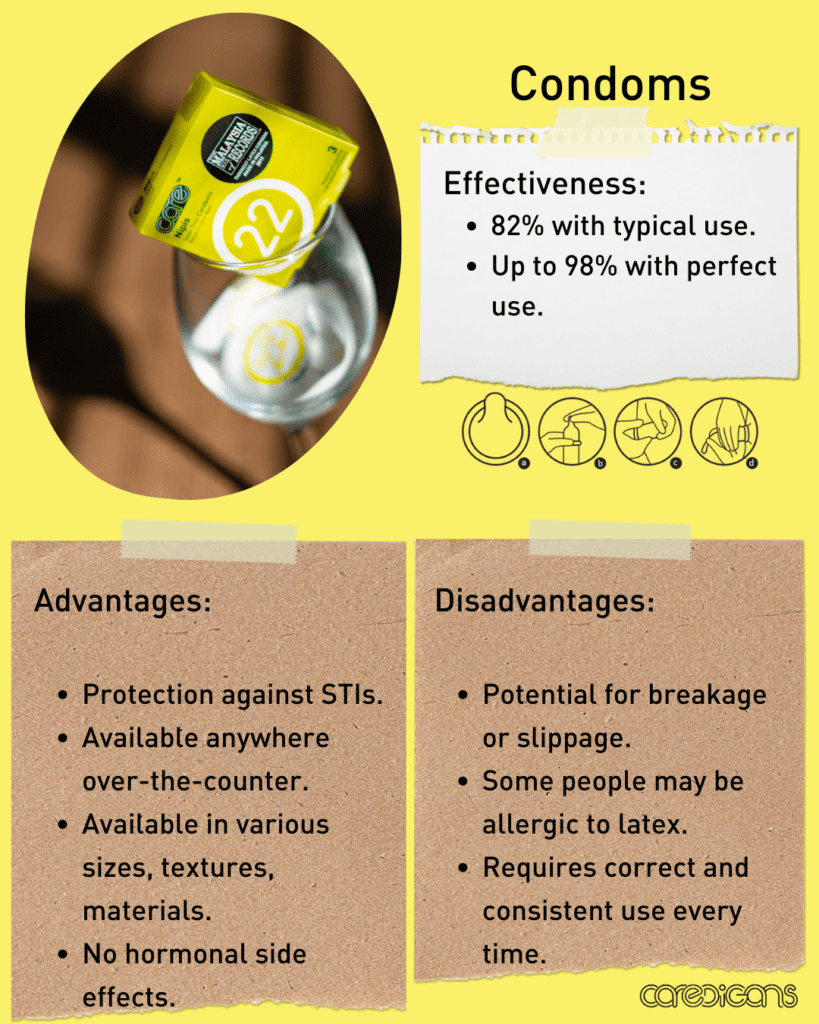
Male Condoms
Effectiveness: 82% (typical use), 98% (perfect use)
Male condoms are worn over the penis to provide a barrier that prevents sperm from entering the vagina. They are one of the most accessible and widely used contraceptive methods.
Pros
- Provides protection against STIs
- Easily accessible without a prescription. Available anywhere!
- Available in various sizes, materials, and flavors
Cons
- Can break or slip off if not used correctly
- Some people may be allergic to latex
- Requires correct and consistent use












